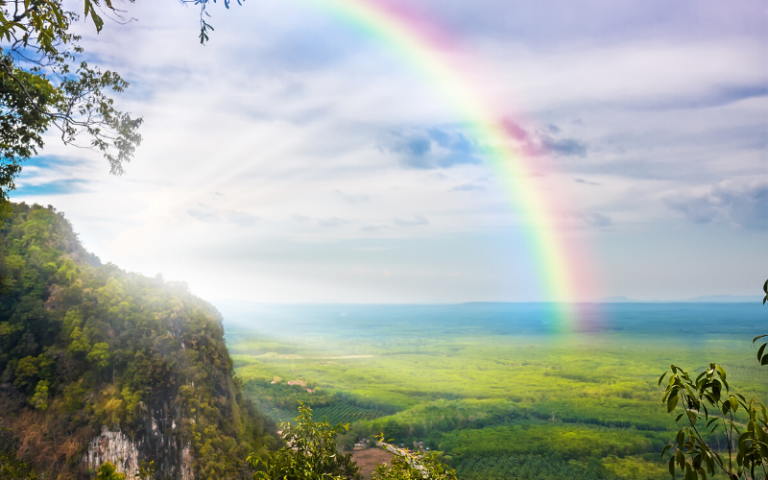The word rainbow comes from the Latin arcus pluvius. This shows that even our ancestors understood its physical origin: there can be no rainbow without rain. But how are rainbows formed? They occur when sunlight - i.e. all wavelengths of light, which together appear as white light - passes through water droplets. And how many color do they contain? That really depends on us. Some scientists even think that perception can be a cultural issue.

Topics covered
The word rainbow comes from the Latin arcus pluvius. This shows that even our ancestors understood its physical origin: there can be no rainbow without rain. But how are rainbows formed? How many colors do they really have? Here are the answers to these and other curiosities.
How Do Rainbows Form?
Rainbows occur when sunlight – i.e. all wavelengths of light, which together appear as white light – passes through water. They can be water droplets left in suspension during a thunderstorm or water mist near a waterfall or the droplets that form the mist.
In a nutshell, the droplets have the effect of many small optical prisms that break down white light into a range of lights of different colors, ranging from violet to red.
In particular, in the case of the rainbow, the portion of light that enters each droplet is diverted. Due to an optical phenomenon produced by the different density of water compared to that of the surrounding air, each component of the light is refracted at a slightly different angle. This is how the striking color spectrum is generated.
Do Rainbows Really Have Stripes?
Not really. That’s how we see them. The “distribution” of color in a rainbow is continuous. This means that there are no stripes. Scientists think it is our brain that divides the rainbow spectrum into distinct bands. We humans love to “organize” everything, including colours, and this also affects the way we perceive the rainbow’s light scattering. But the exact mechanism by which we see the stripes remains unknown.
How Many Colors Do We See in a Rainbow?
That really depends on us. Some scientists even think that perception can be a cultural issue. The great philosopher Aristotle, one of the first scholars to describe a rainbow, saw only three colors: red, green and blue. The first Islamic scholars instead saw a red, green and yellow rainbow. Renaissance scholars established that there were 4 colors: red, blue, green and yellow. In the 17th century thinkers identified five: red, yellow, green, blue and purple.
In 1637 Descartes discovered that rainbows were caused by light from the sun which was divided into different colors by rain. He anticipated Isaac Newton who would later connect the colors perceived in a rainbow to the notes on a musical scale, convincing European scientists that the colors were 7. The truth is that there is no precise number of colors in a rainbow. In fact, each hue blends into the next without a clear boundary, leaving the interpretation to the viewer.
How Do You See a Rainbow?
A rainbow is always opposite the sun. So you can only see it if you are between the area where the suspended water drops (rain, water vapour, etc.) are located and the position of the sun in the sky. That’s why you can only see rainbows by looking at the rain and not at the sun’s side.




